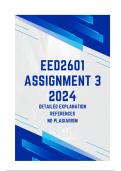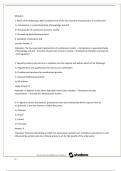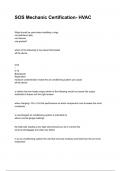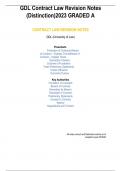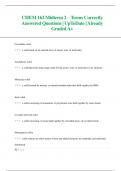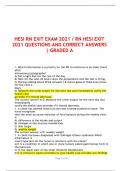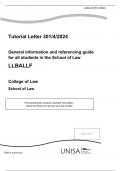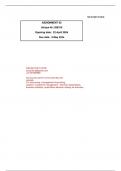Tentamen (uitwerkingen)
EED2601 Assignment 3 (COMPLETE QUESTIONS & ANSWERS) 2024 (682979) DUE 26 July 2024
- Vak
- Instelling
- Boek
EED2601 Assignment 3 (COMPLETE QUESTIONS & ANSWERS) 2024 (682979) DUE 26 July 2024: ACTIVITY 1 Learners should not only learn about the environment but should also be active participants in the learning situations in environmental education processes. Your answer should reflect the process of act...
[Meer zien]
